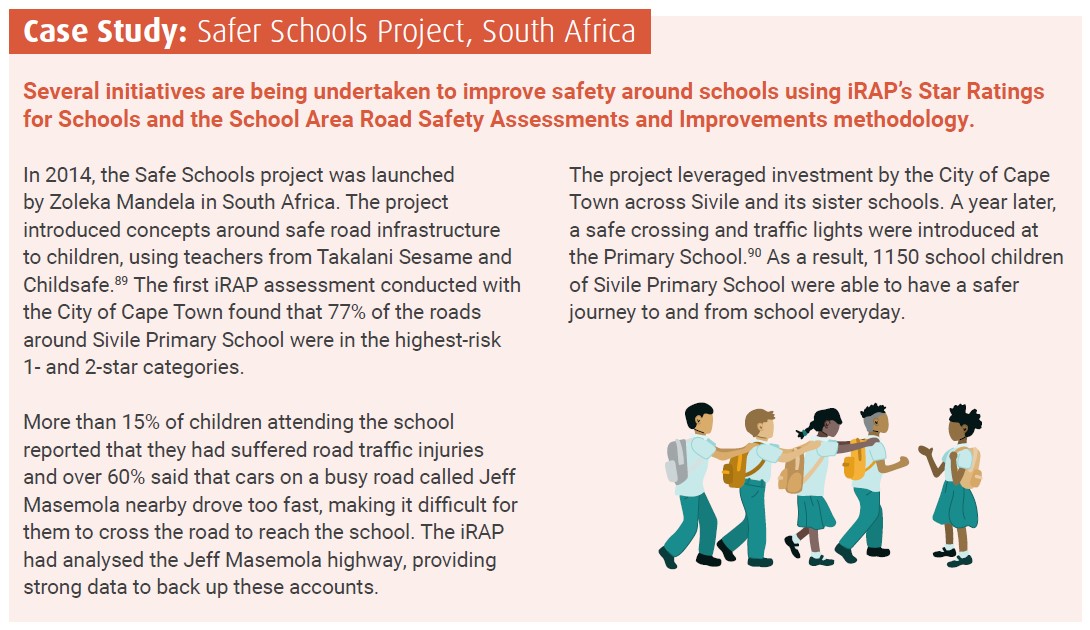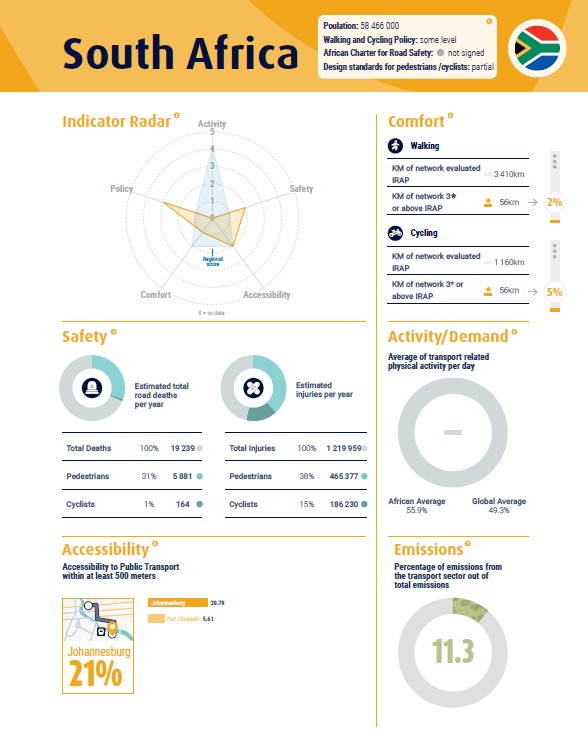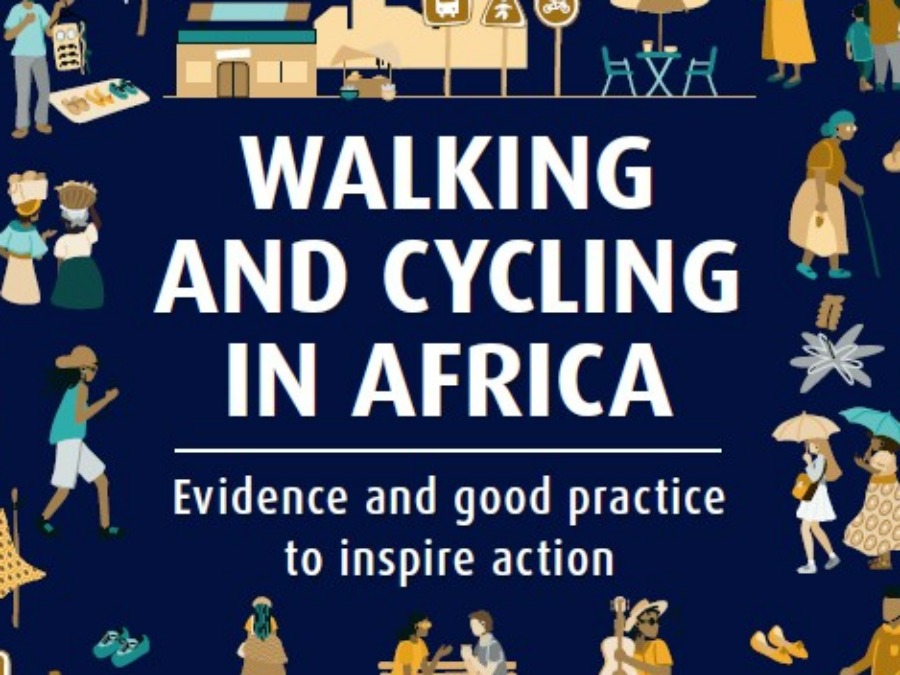A new Walking and Cycling in Africa Report shares critical evidence (including iRAP data) and good practice (such as Star Rating for Schools) for governments and decision makers to inspire action to retain, protect and enable people that walk and cycle.
“This report is a call to action for the 261 pedestrians and 18 cyclists are killed on African roads every day,” shared Oumar Sylla, Director for the Regional Office for Africa in the United Nations Human Settlements Programme in the publication,
“Even though the majority of the population relies on non-motorised transport, countries in Africa are among the least safe places to walk and cycle in the world.
“The lack of essential infrastructure makes the experience of walking and cycling difficult, unpleasant, and dangerous,” Mr Sylla said.
Universal access to safe, affordable and sustainable transport systems is paramount to achieving environmental, health and road safety targets in alignment with the Sustainable Development Goals, the Paris Agreement, the New Urban Agenda and the transformative 2063 vision for Africa.
Addressing African mobility challenges requires a paradigm shift in urban and transport planning. The bias towards private motor vehicles needs to change in favour of reliable public transport systems integrated with walking and cycling.
The report is a first attempt at gathering, analysing and presenting data to demonstrate the everyday reality for the one billion people in Africa who walk and cycle, on average 56 minutes, every day. 78 per cent of Africans walk for transport daily to reach essential services.
Conditions in all 54 African countries are baselined.

The report shares that, of roads assessed in Africa using the iRAP Methodology, 95% of roads fail to provide an acceptable 3-star level of safety for pedestrians and 93% fail for cyclists. Most roads are 1-star meaning that they have no cycle paths, no safe crossings and high vehicle speeds.
iRAP Pedestrian Star Rating data collected in nine African countries show that:
- 74% of the roads surveyed had no sidewalks
- 92% of the assessed roads had no crossings
- 48% of crossings were poorly signed or maintained
- 55% of roads rated 1-star for pedestrians and 40% rated 2-star
- Only 4% of assessed roads achieved the minimum goal 3-star safety rating
Developed by the UN Environment Programme (UNEP), the United Nations Human Settlements Programme (UNHabitat) and the Walk21 Foundation, the report provides the evidence, knowledge and key actions required to ensure transport decisions made today will deliver safer, more sustainable and resilient networks in the future.
It sets out the policy landscape for walking and cycling, recommendations for governments and other stakeholders, and makes the case for retaining, enabling and protecting those already moving in the most sustainable way possible.
Inspiring best practices are highlighted, including examples of safer school journeys informed by Star Rating for Schools.


Images source: Walking and Cycling in Africa Report


